6 Captivating Yellow Freshwater Fish Species for Your Aquarium
- May 05, 2024
- Arianna Rizzi
- 350 0 0

For those who enjoy the beauty of aquatic life, an aquarium filled with vibrant yellow freshwater fish can be a captivating addition to any home. In this article, we'll explore a curated selection of 6 stunning yellow freshwater fish species. Each fish boasts its own distinct characteristics, from striking shapes to intricate patterns
The golden hue seen in these fish is the result of a pigment called Chromatophores Xanthine, housed within specialized cells responsible for producing yellow tones. While yellow fish are a popular choice for aquarium enthusiasts, selecting the perfect species to showcase their radiant beauty can be a nuanced process.
Yellow aquarium fish bring to mind images of shimmering gold and the warmth of sunlight dancing on water. Their presence can transform any space, bringing a sense of tranquility and rejuvenation to those who admire them.
Lemon tetras
Hailing from the tropical freshwater habitats of South America, lemon tetras are charming additions to any aquarium, bringing a delightful burst of color. These freshwater beauties are not only visually appealing but also known for their lively disposition and low-maintenance care requirements. Naturally inclined towards peace and sociability, they thrive in community setups.
Measuring up to 2 inches in length, lemon tetras boast a distinctive diamond-shaped body, although they tend to be deeper-bodied and more laterally compressed compared to other tetra species. Their adult form showcases translucent bodies with a subtle yellow tint, while their caudal fin takes on a striking glass-like appearance with a defining black border along its edge. The triangular dorsal fin adds to their elegance, being semi-transparent, while the anal fin features bold yellow and black markings.
Distinguishing between male and female lemon tetras is facilitated by examining the black lines in their anal fins. In females, this line appears thin like a pencil, whereas in males, it's noticeably thicker and more prominent, a characteristic that becomes increasingly distinct as the fish mature.
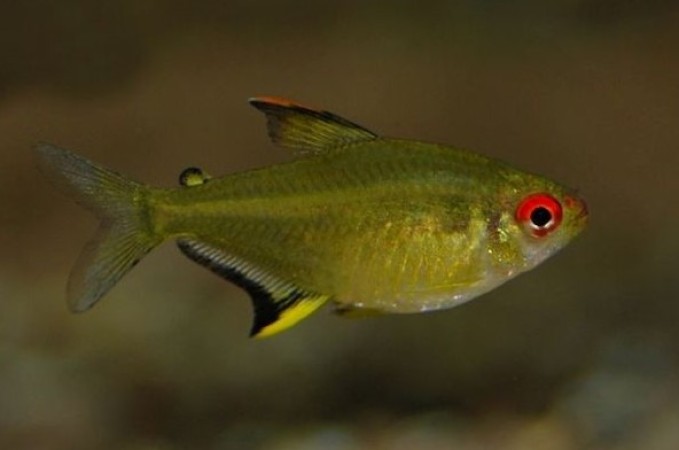
Golden Pristella
Closely related to the lemon tetra, the golden Pristella tetra originates from the coastal rivers of South America. This tropical beauty, scientifically known as Pristella maxillaris, boasts remarkable resilience despite its delicate appearance. Its nickname, the X-Ray Fish, derives from its semi-transparent body, which gleams with a silvery yellow hue.
One of its most striking features is its fin coloration. The Pristella tetra's dorsal and anal fins sport captivating white tips, accentuated by a mesmerizing pattern of alternating yellow and black stripes. Additionally, its tail fin adds a vibrant splash of color, appearing either in shades of red or pink.
Compared to its more vibrant cousin, the lemon tetra, the Pristella tetra offers a subtler yet equally captivating presence in aquariums. Its modest size, typically less than 2 inches in length, adds to its charm, making it a delightful addition to any shoaling community.
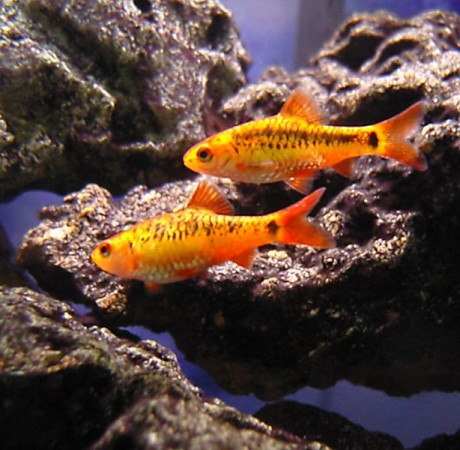
Electric yellow African Cichlid
Among African cichlid enthusiasts, Electric Yellows reign as the most coveted species, also recognized as Yellow Labs or Electric Yellow Labs, owing to their stunning yellow hues. Their brilliance earns them their distinctive moniker.
With a robust build and elongated body, Electric Yellow Cichlids exhibit a deep yellow coloration, varying slightly between males and females. Both genders boast a striking dorsal fin adorned with a vivid black stripe, bordered by layers of white above and below. The anal fin also adopts a similar black stripe pattern. It's worth noting that young Electric Yellows may not display the full intensity of their fin striping until they mature.
During breeding periods, males undergo a remarkable transformation, showcasing vibrant blue hues. Their captivating yellow coloration is undeniably alluring, rendering them among the most visually stunning freshwater fish.
However, their semi-aggressive nature necessitates careful consideration when selecting tank mates to ensure compatibility.
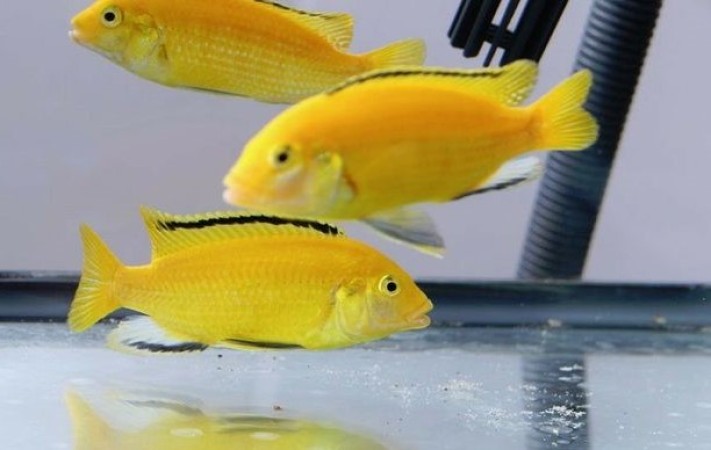
Honey Gourami
Hailing from the waterways of northern India, Bangladesh, and occasionally Nepal, the Honey Gourami is a favored choice among novice aquarists due to its gentle demeanor and resilience.
With an average size of around 2 inches, these gouramis are ideal for beginners venturing into fishkeeping for the first time. Their peaceful nature and ability to adapt to various water conditions make them a reliable addition to any aquarium setup.
Both male and female Honey Gouramis start off with a silvery gray to light yellow hue, adorned with a subtle light brown stripe running horizontally along their bodies from behind the eye to the caudal peduncle. However, while females maintain this coloration throughout their lives, males undergo a remarkable transformation. Over time, they develop vibrant honey-yellow or reddish-orange hues, contrasting beautifully with a dark blue or black ventral side encompassing the face, throat, and belly. This striking coloration makes them a captivating centerpiece in any tank.
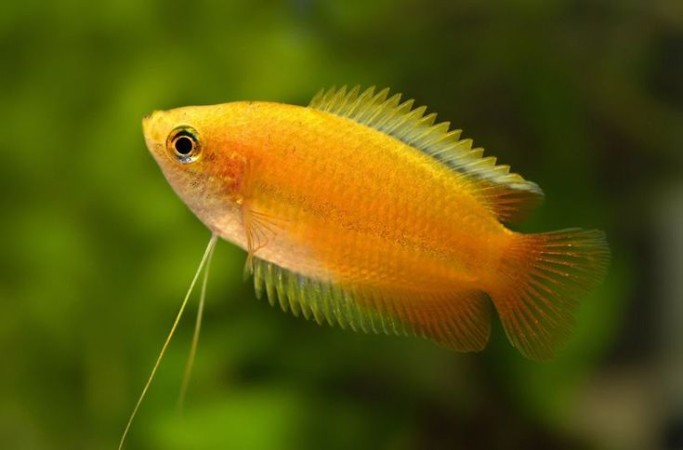
The Sunburst Orange GloFish Danio
The Sunburst Orange GloFish Danio, scientifically known as Danio rerio, is a visually striking fish with a fusiform, laterally compressed body typically reaching lengths of around 2 inches, though some individuals in captivity have grown up to 2.5 inches
What sets these danios apart is their captivating appearance, achieved through genetic modification. Their luminous glow and fluorescent orange coloration are attributed to a gene borrowed from sea coral. Adorned with vibrant stripes along the sides of their bodies, they add a burst of color to any aquarium.
To ensure their well-being in captivity, it's essential to maintain specific water parameters. Keeping the pH levels between 6.0 and 8.0 and the water temperature within the range of 64ºF to 75ºF is crucial. Additionally, providing a suitable environment is key, including a sandy substrate, ample open spaces for swimming, gentle water currents, and live plants.
Despite their striking appearance, Sunburst Orange GloFish Danios are peaceful by nature and can thrive in community tanks. However, it's recommended to keep them in groups of at least five individuals, housed in a spacious 20-gallon tank or larger, to ensure their social well-being and happiness.
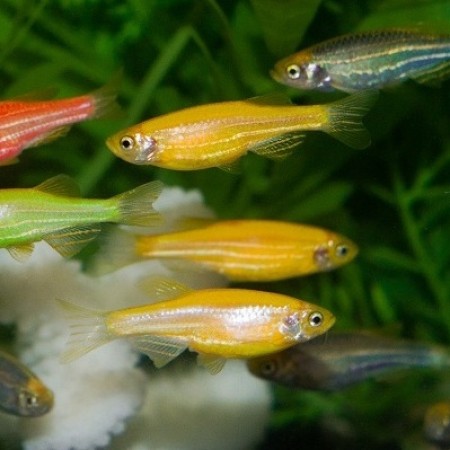
Combtail fish
The Combtail fish, native to the shallow waters of serene, slow-moving streams and rivers in Sri Lanka, displays a distinctive appearance reminiscent of the stocky Paradise Fish. One notable feature is its caudal fin, where the rays extend beyond the fin's web, resembling a comb, hence its common name.
Its coloration spans from light brown to yellowish, with some showcasing a predominant brick-red hue above, fading into a pale yellow or silvery gray below. Variants may sport blue markings along the lower half of their body, with eyes often adorned with a partial metallic blue rim. The unpaired fins, including the dorsal, anal, and caudal fins, typically exhibit vibrant to brick-red shades, often accented by blue edges, while the extended tail rays commonly appear black.
In aquarium settings, Combtail fish typically grow up to around 4 inches in length. However, they are not ideal for community tanks due to their territorial behavior and tendency to prey on smaller fish. During mating periods, males may exhibit striking patterns of dark bands.
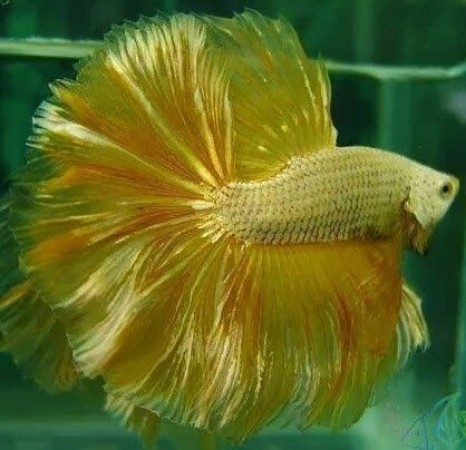







About author